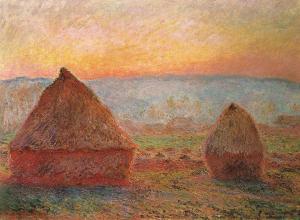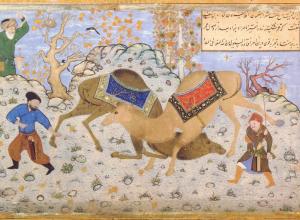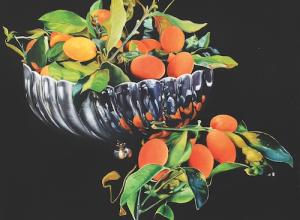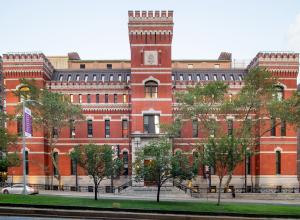When working in his performance painting series, Azam had to grapple with difficulties presented by lack of gravity and acute cold. “I couldn't use paint in Zero Gravity as it would have floated so, I ended up using oil sticks. For Antarctica, we had to make special anti-freezing paints, which I tested in the freezers of the Billingsgate fish market prior to the trip.” He found it fascinating that the myriad shades of white in Antarctica gave him a different perspective on color, and was intrigued that the scientists at the Russian base in Antarctica “openly embraced what I was doing.”
Born in Jhelum, Pakistan in 1963, Azam moved to London with his parents in 1970. A luminary in the art world since the 1980s, Azam has a new series of large scale abstract paintings at the Saatchi Gallery that were also created in a unique and challenging location. The exhibition, Nasser Azam: Saiful Malook, runs May 30 to June 10. Inspired by the Sufi saint and poet Mian Muhammad Bakhsh (1830-1907), whose poetic fantasy epic made Lake Saiful Malook famous, Azam visited the lake high in the Pakistani mountains to create his new series. Azam, born in the same city as Bakhsh, explores ancestral connections in Saiful Malook. “This series is about going back to my roots to create art,” he says, rather than directly interpreting the poem. The resulting works are an artistic response to his visit, referencing the themes in the poem that personally resonated.

































